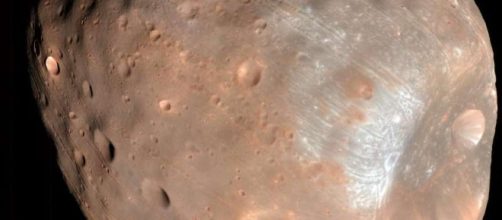Space scientists at the Purdue University discover red-colored rings on the surface of Mars. There are numerous large and small rings throughout the surface of Mars. Experts believe that these look exactly like the rings present on the surfaces of Jupiter, Saturn, and Mercury. David Minton at the Purdue University teams up with Andrew Hesselbrock at the University of Glasgow to study the patterns of the newly discovered rings. Scientists will publish the findings in the journal “Nature Geoscience.” David Minton says red rings are present in the northern pole of Mars, covering about 70 percent of the planet.
Strange-looking rings
David and Andrew’s model suggests that the rings form when the debris moves away from the planet. With time, Mars' gravitational surface pulls the moons towards the planet until they reach its Roche limit. The NASA-funded research indicates that the process of rings breaking apart into moons will take millions of years. Scientists believe that Phobos, one of Mars' moons, formed when a similar ring broke down into tiny particles. The whole process took roughly 30 million years. Minton and Hesselbrock say the cycle completes in millions of years. Each time a ring breaks apart, it forms debris and dozens of new planets. Another similar research suggests that red rings on the surface of Mars formed Phobos-like moons in a large number that lasted for almost 2 million years.
Later these disappeared in the universe, and there is no evidence of their existence.
The future of this discovery
The Martian rings are 4,200 miles from our Earth. Scientists will find out their exact age and characteristics. They believe that the rings are present both in large and small sizes. We know a lot about Mars, but the newly discovered rings are very strange as their color changes from red to green every seven days. Andrew Hesselbrock explains that the Borealis Basin extends over 40% of the planet, and this could be the origin of the rings. In the future, the Borealis Basin will create countless rings to form a large number of moons. Scientists do not know anything whether Mars will have rings in the future or not. However, they believe that the continuous production of rings will limit the research of finding life on the planet.

